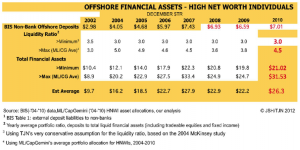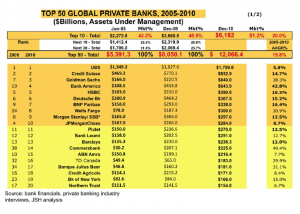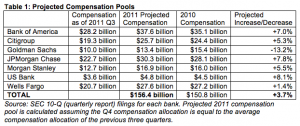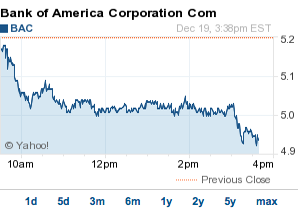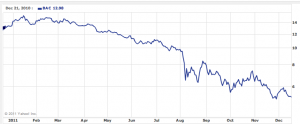In a Nation Ravaged by Banksters, FBI Can’t Afford the “Luxury” of Frivolous Counterterrorism Stings
In a JustSecurity post reviewing the same speech that I observed ignored US failures to prevent violent extremism, NYU Professor Samuel Rascoff defends the US use of counterterrorism stings, even in spite of the details revealed by HRW’s report on all the problems related to them. David Cole has an excellent response, which deals with many of the problems with Rascoff’s argument.
I’d like to dispute a more narrow point Rascoff made when he suggested that, because we have so many fewer trained militants than the Europeans, we “can[] afford” the “luxury” of stings.
There are now approximately 3,000 European passport holders fighting in Syria and Iraq. In the time that it took Najibullah Zazi to drive from Denver to New York, a fighter could drive from Aleppo to Budapest. What that means is that European officials are relatively more consumed than American counterparts in keeping up with, and tabs on, trained militants. Orchestrating American-style sting operations is, in a sense, a luxury they cannot afford.
The claim is astonishing on its face, in that it suggests that, because we don’t have real militants like Europe does, we should engage in the “luxury” of entrapping confused young Muslim men and sending them to expensive decades-long prison terms.
Think a bit more about that notion of “luxury” and the financial choices we make on law enforcement. Here are some numbers taken from two sources: the HRW report (I basically searched on the dollar sign, though this doesn’t include every mention of dollars) and today’s Treasury settlement with Bank of America for helping 10 drug kingpins launder their money over a four year period, three years of which constituted “egregious” behavior.
First, HRW reports that FBI spends over $1.3 billion a year on counterterrorism, much of it stings, leaving less than $2 billion for all other investigations.
More than 40 percent of the FBI’s operating budget of $3.3 billion is now devoted to counterterrorism.
That allows the FBI to pay some of its informants and experts hefty sums.
Beginning in August 2006, the FBI paid Omar $1,500 per week during the investigation. Omar received a total of $240,000 from the FBI. This included: $183,500 in payment unrelated to expenses, and $54,000 for expenses incurred during the investigation including car repair and rent.
[snip]
“Kohlmann is an expert in how to use the Internet, like my 12-year-old. He has found all the bad [stuff] about Islam, and testifies as if what he is reading on the Internet is fact. He was paid around $30,000 to look at websites, documents, and testify.”
These informants sometimes promise — but don’t deliver — similar hefty sums to the guys they’re trying to entrap.
Forty-five-year-old James Cromitie was struggling to make ends meet when, in 2009, FBI informant Hussain offered him as much as $250,000 to carry out a plot which Hussain—who also went by “Maqsood”—had constructed on his own.
[snip]
The informant proposed to lend Hossain $50,000 in cash so long as he paid him back $2,000 monthly until he had paid back $45,000.
Which is particularly important because many of these guys are quite poor (and couldn’t even afford to commit the crimes they’re accused of).
At the time he was in contact with the informant and the undercover [agent] he was living at home with his parents in Ashland and he didn’t have a car, he didn’t have any money and he didn’t have a driver’s license because he owed $100 and he didn’t have $100 to pay off the fine. In various parts of the investigation he didn’t have a laptop and he didn’t have a cellphone. At one point the informant gave him a cell phone.
And some of these crimes (the very notable exceptions in the HRW report include two material support cases, both of which are close calls on charity designations, but which involved very large sums, $13 million a year in the case of Holy Land Foundation) involve relatively minscule sums.
According to the prosecution, Mirza was the ringleader in collecting around $1,000—provided by the FBI agents and co-defendant Williams—that he handed to a middleman with the intent that it go to families of Taliban fighters.
So one theme of the HRW report is we’re spending huge amounts entrapping what are often poor young men in miniscule crimes so taxpayers can pay $29,000 a year to keep them incarcerated for decades.
These are the stakes for what Rascoff calls a “luxury.” At a time of self-imposed austerity, these stings are, indeed, a luxury.
Compare that to what happens to Bank of America, which engaged in “egregious” violations of bank reporting requirements for three years (and non-egregious ones for a fourth), thereby helping 10 drug kingpins launder their money. No one will go to jail. Bank of America doesn’t even have to admit wrong-doing. Instead, it will have to pay a $16.5 million fine, or just 0.14% of its net income last year.
This settlement came out of a Treasury investigation, not an FBI one.
But when DOJ’s Inspector General investigated what FBI did when it was given $196 million between 2009 and 2011 to investigate (penny ante) mortgage fraud, FBI’s focus on the issue actually decreased (and DOJ lied about its results). When FBI decided to try to investigate mortgage fraud proactively by using undercover operations, like it does terrorism and drugs, its agents just couldn’t figure out how to do so (in many cases Agents were never told of the effort), so the effort was dropped.
Banks commits crimes on a far grander scale than most of these sting targets. But FBI throws the big money at its counterterrorism stings, and not the banks leaching our economy of its vitality.
Rascoff accuses HRW’s and similar interventions of being one-dimensional.
[F]or all the important questions about official practices that critics raise, they have tended to ignore some hard questions about the use of stings and the tradeoffs they entail.Instead, their interventions have an exaggerated, one-dimensional quality to them.
But he himself is guilty of his own crime. Because every kid the FBI entraps in a $240,000 sting may represent an actual completed bank crime that will never be investigated. It represents an opportunity cost. The choice is not just sting or no sting or (more accurately, as David Cole points out) sting or community outreach and cooperation.
Rather, the choice is also between manufacturing crimes to achieve counterterrorism numbers or investigating real financial crimes that are devastating communities.
So long as we fail to see that tradeoff, we fail to address one major source of the economic malaise that fuels other crimes.
Ignoring bank crimes is, truly, something we don’t have the luxury of doing. Nevertheless, we continue to choose to go on doing so, even while engaging in these “luxurious” counterterrorism stings that accomplish so little.

